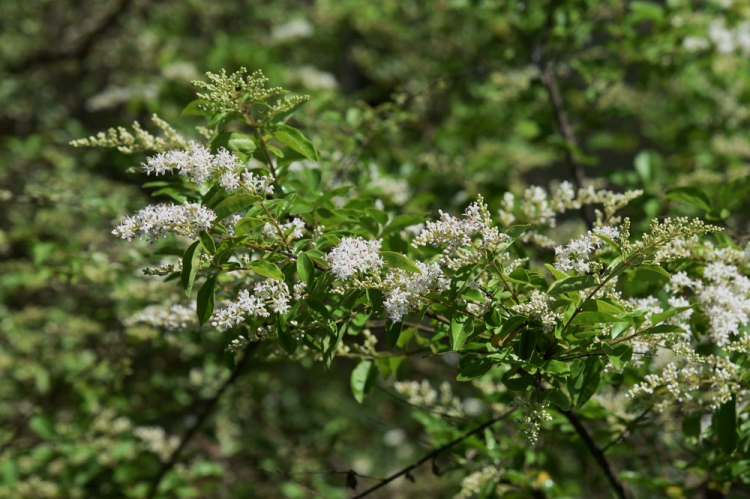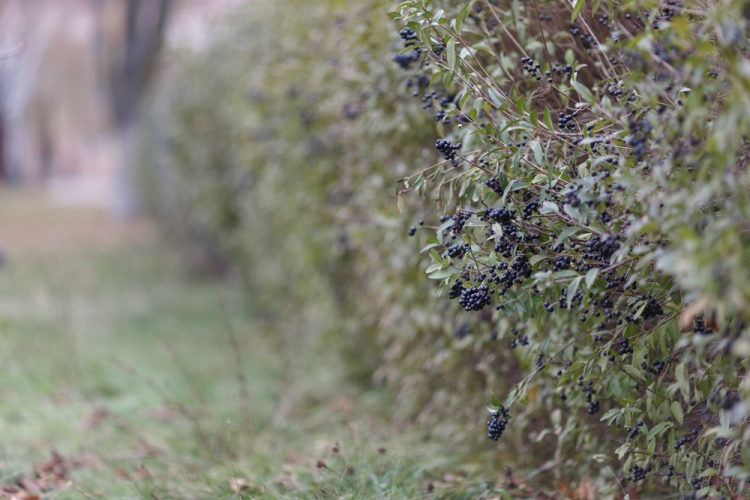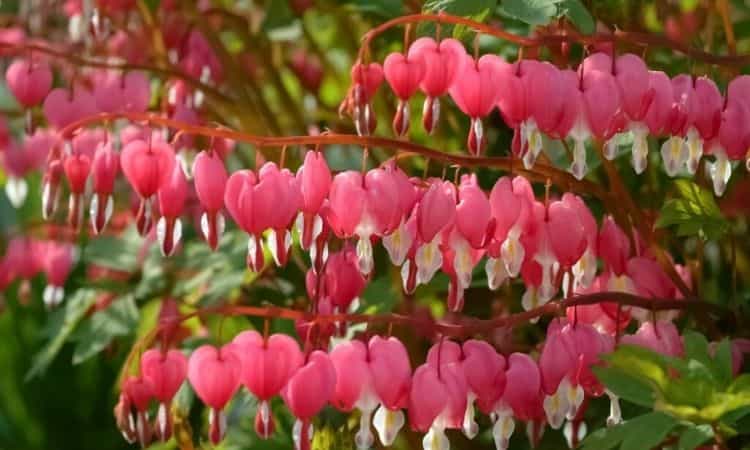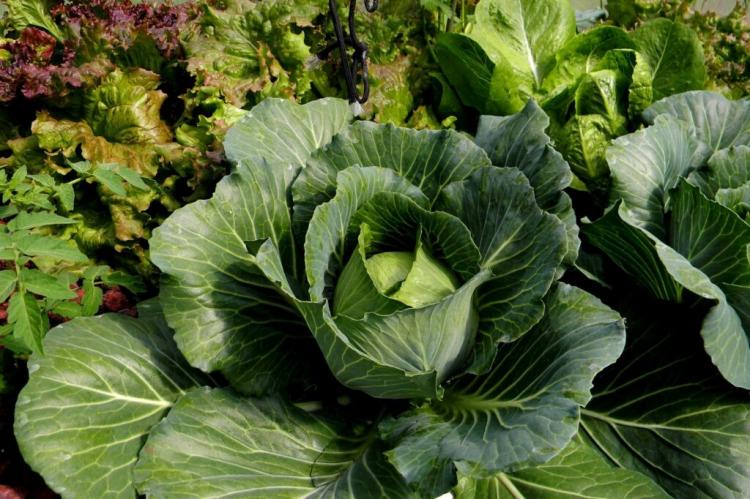Privet: Expert Tips On Planting, Cutting
The evergreen privet is a popular privacy screen in home gardens. We show what needs to be considered when buying, planting, cutting, and the like. If you are looking for an easy-care and durable privacy screen, the Privet ( Ligustrum ) is the right address. The plant makes a beautiful hedge and is an excellent alternative to privacy screens made of plastic or wood.
Fortunately, the privet requires little effort. And yet it has more to offer than you might think. In summer it shows its fragrant white flowers and in autumn and winter, it presents itself with shiny blackberries. If you want, you can even try your hand at the privet as an artist, because the plant can be pruned into all kinds of shapes. Whether as an accurate hedge, in artistic forms, as a bonsai, or as a wild shrub – privet can be used in many ways.
Privet: characteristics and origin
Table of Contents
Privet is a widespread genus of the olive family (Oleaceae), the individual species often come from Japan or China. There are only one species native to Europe, the common privet ( Ligustrum vulgare ). Privet is an evergreen or semi-evergreen shrub or tree. The plant has long established itself as an ornamental plant in European gardens. Its good cut tolerance has made it widely used as a garden hedge. Between June and August, it also forms white and often fragrant flowers that attract numerous native butterflies, bees, and species of flies. The berries that show up afterward are no less popular. Birds can therefore often be seen on the privet hedge in winter.

Privet species
With over 40 species, the privet is versatile. In German-speaking countries, semi-evergreen species are mainly used as ornamental plants – these only lose their leaves in very cold winters and therefore offer sufficient privacy protection even in the frosty season. Important species are, for example, the common privet ( Ligustrum vulgare ) or the oval-leaved privet ( Ligustrum ovalifolium ).
Planting privet
When planting privet, it is particularly important to keep the planting distance. There should never be more than three plants per running meter in a hedge. Once the young privet plants are in the ground, a sufficient supply of water is necessary until they are properly rooted.
Propagate privet
The propagation of the privet is very uncomplicated because you have three options here: In spring with cuttings and summer with cuttings and cuttings, the last method being a bit more complex.

Maintain privet
The privet is pretty undemanding, which makes it an easy-care addition to the garden. Only the cut needs your attention and should be done at least once a year.
Water privet hedges
Immediately after planting, privet plants are of course still very needy and their root system is not yet fully developed. For this reason, they are not yet able to get water from the wider area. Therefore, water freshly planted or young plants regularly so that they develop well. Older specimens need a little water now and then at most when it is very dry. However, too much water and waterlogging must be avoided at all costs, as this can lead to root rot.
Trimming privet hedges
Privet is very cut tolerant. This makes it relatively easy to educate yourself about a beautiful, dense hedge or even a ball or pyramid. To encourage branching, pruning should be carried out once or twice a year. The ideal time for this is early spring or the beginning of October. Radical pruning is also possible in the case of baldness. You might so like: Trimming Privet Hedges: Professional Tips For The Perfect Cut

Fertilize privet hedges
Long-term fertilization in March or April is completely sufficient for the privet. It is best to use a long-term fertilizer. Alternatively, compost or manure are also suitable. Incorporated into the soil, the fertilizer will last until the next time. Mineral fertilization, on the other hand, is unfortunately not so long-lasting. A second gift at the beginning of August is recommended.
Privet Hedges: Common Pests and Diseases
Privet is an extremely robust plant. It is seldom afflicted by diseases or pests and even then these usually do not cause any significant damage.
The main pests and diseases on privet:
- Leaf spot diseases: These are caused by different types of fungus. The most common pathogens here are representatives of the genera Ascochyta, Septoria, Colletotrichum, and Phyllosticta. The fungus Cercrospora ligustri can often be found on the privet. You can easily recognize the infestation of leaf spot diseases by the irregular spots on the leaves. Differentiating the various pathogens is a real challenge, however. Most of the troublesome fungi particularly like to settle in high humidity. In a dry or windy location, leaf blotch infestation should not be a problem.
- Root rot: Waterlogging can lead to root rot, which can only be prevented by choosing the right location. When planting the privet, make sure that you do not plant the plant in the ground where the puddles collect when it rains. If the soil is particularly impermeable to water, you should mix some sand under the soil before planting or even create drainage using gravel.
- Privet aphid ( Myzus ligustri ): As a result of an infestation, the leaves curl up, turn yellow and eventually fall off. Strong pruning is usually helpful here.
- Powdery mildew ( Microsphaera penicillata ): The dreaded fungus can occur in rare cases but does not cause any further damage. It does not appear until late summer and can be recognized by a whitish coating on the leaves.
All in all, privet is very resilient and can cope with most diseases and pests on its own.
Privet Hawk
In individual cases, the privet hawk caterpillar ( Sphinx ligustri ) can also be discovered on the privet. The large moth’s caterpillar is bright green with distinctive markings and a kind of sting at the rear end. You can find out why its appearance is not a cause for concern, even though it looks so huge, in our special article on privet swarmers.
You might so like: Hibiscus Hedge: Tips On Choosing Varieties, Planting And Care

Is the privet poisonous?
Privet is only slightly poisonous. Nevertheless, one should be careful, because even if birds benefit from the berries in winter, they can cause symptoms of poisoning in humans. Not every animal can eat without consequences.







Want to plant privet 4 feet from the vegetable garden. Is this dangerous as it is poisonous?
Now let’s see who to cross off the invitation list. There are two species of privet that we can easily garden without, and be happier for the experience. If you live in the north-east, then European privet (Ligustrum vulgare) also called common privet, is the main bad-guy. This is a plant that will grow rapidly and crowd out your garden, as well as producing some dull flowers that never the less seed profusely, and have already spread into many north-eastern forests.
Further south the Chinese privet (Ligustrum sinense) is the playground bully. This plant is not especially cold-hardy, but it thrives in the warmth and humidity of the southeast, again seeding and spreading into natural forests and crowding out native species. The variegated from of Chinese privet is much tamer and has attractive leaves edged in white. It grows more slowly and also flowers much less, so it doesn’t present the same environmental hazards.
Also sometimes called Chinese privet, but better called glossy privet, Ligustrum lucidum does indeed have attractive glossy foliage, but in areas like Texas it to is invasive. These plants spread outside the garden because birds eat the berries and then spread the seeds as they move about and do what birds do. . .